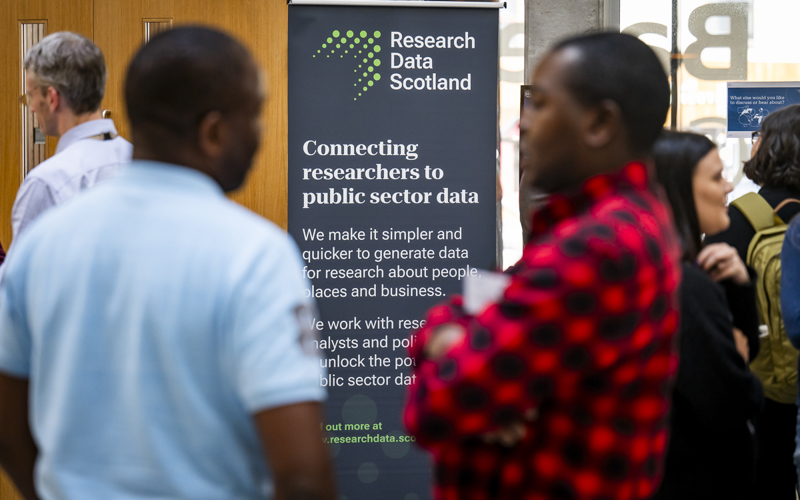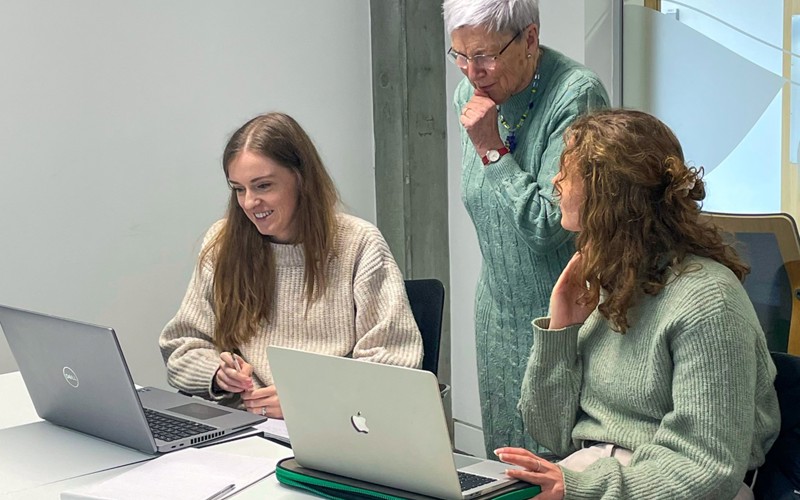
RDS strengthens public involvement for research access
Members of the public will provide early feedback on research applications as part of a new advisory group.
13 Oct 2025

Average reading time 3 minutes
30 Oct 2025
Latest changes to the Researcher Access Service bring improvements for researchers and the public, simplifying secure research access to Scotland’s public sector data.
Developed by Research Data Scotland, in collaboration with eDRIS at Public Health Scotland, the Researcher Access Service (RAS) is a streamlined end-to-end platform for researchers accessing secure data. Launched in 2024, the RAS is a fully digitised and simplified application process, enabling researchers to track their data access request from start to finish. The service applies a risk-based triage process guided by the Five Safes Framework, meaning that eligible projects no longer need to be considered by a Public Benefit and Privacy Panel (PBPP).
October sees the introduction of key updates to the RAS, including Digital Economy Act accreditation requirements, a new application form and the creation of the Public Impact Advisory Group.
As part of our strategy to align with the Digital Economy Act (DEA) 2017, all applications submitted through the RAS approval pathway will now need to be made by DEA accredited researchers. Researchers who need to work with secure data can apply for accreditation with the Office for National Statistics (ONS).
This only applies to researchers applying for data access through the RAS Approval Pathway from 30 October 2025. Applications via the Health-PBPP or the Scottish Government and NRS Data Access Panel are unaffected by these changes. You can read more on the two pathways here.
We have been working closely with the UK Statistics Authority, Administrative Data Research (ADR) UK and other partners on a newly standardised application form. This form, which will be piloted for the next 6 months, will make the application process simpler for researchers who wish to apply for data held across multiple services in the UK which use DEA accreditation.
The Public Impact Advisory Group (PIAG) is made up of members of the public. They will review and provide feedback on applications received through the RAS, with a focus on their potential impact for the public good.
Amin, a member of the PIAG, is keen to get started: “Being part of the Public Impact Advisory Group means helping to make sure that research reflects the real needs and experiences of our communities. As someone with caring responsibilities for elderly parents, I see firsthand how important it is that research and innovation consider the everyday realities of patients, families, and carers. I hope the group will act as a bridge between researchers and the public, promoting meaningful dialogue and ensuring that the benefits of research reach everyone.”
The introduction of the PIAG – which will run as an initial six-month pilot – will improve transparency and public involvement within the Researcher Access Service process. The group will meet monthly to discuss new RAS applications, before the applications go to the RAS panel for final approval.
Suhail Iqbal, Service Owner at Research Data Scotland, said: “The Researcher Access Service exists to make it simpler to access data to support research in the public good. Our main focus in further developing the RAS is to introduce measures and improve procedures that will enable more data to be added, and to speed up the process of accessing it. These latest developments will help us to reach these goals, maintaining the privacy of citizens while also strengthening our service for researchers and embedding public voice within these projects.”
For more information on the Researcher Access Service, read our project page or find out more about the application process here.
Related content

Members of the public will provide early feedback on research applications as part of a new advisory group.
13 Oct 2025

Research Data Scotland (RDS) will require all researchers who apply for access for data through the Researcher Access Service (RAS) approval pathway to have accredited researcher status from Thursday 30 October.
12 Sept 2025
To stay updated with Research Data Scotland, subscribe to our monthly newsletter and follow us on X (Twitter) and LinkedIn.
